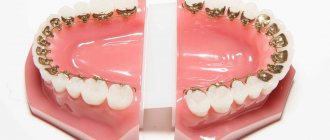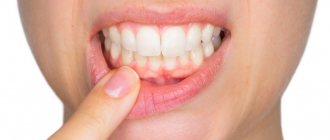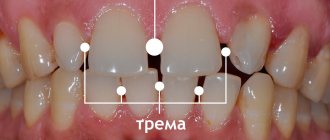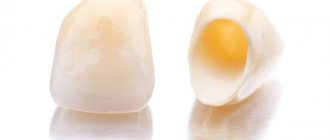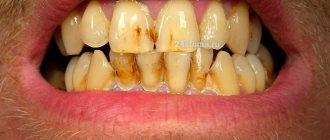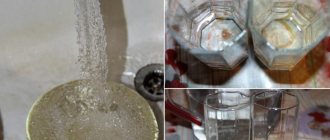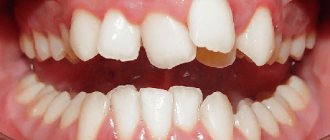Orthodontic treatment is a difficult period: often one or another seemingly small problem seriously overshadows life. Unfortunately, doctors cannot always foresee all the questions that arise, or there is not enough time at the appointment to talk in detail about all the intricacies. This article will help fill in those gaps and make your life with braces easier and clearer. Also, read the answers to the most frequently asked questions.
- Are your braces rubbing?
- What to do if a brace comes off?
- Teeth hurt after getting braces
- The archwire flew out of the bracket, what should I do?
- Broken bracket or archwire?
- Treatment of damage to the oral mucosa
- What can and cannot be eaten with braces?
- Menu during orthodontic treatment
- How to brush teeth with braces?
Are your braces rubbing? Orthodontic wax will help.
If any element of the braces system rubs on you, seal it with orthodontic wax . Usually it is given by the orthodontist after fixing the braces. In addition, you can use regular dental wax in red strips; it is not so flexible, so it must be preheated in hot water. From wax of any type, after heating it, you need to make a ball the size of a match head to a pea and attach it to the dried surface of a bracket, hook or other element of the bracket system.
Method of applying wax to brackets.
How to get used to the braces system?
Any braces are a foreign body in the oral cavity. And in the first couple of weeks after their installation, the body will be uncomfortable with them. Then addiction will set in, and the braces system will no longer cause inconvenience.
During the habituation period, you may experience:
- increased salivation,
- impaired speech clarity,
- The braces system can rub the mucous membrane.
To reduce these negative effects to a minimum and quickly get used to braces, we recommend:
- Rinse your mouth with astringent solutions - decoctions of oak bark, shepherd's purse, drink tea with viburnum, water with lemon - this will help reduce saliva production.
- Practice pronunciation by speaking tongue twisters or simply reading aloud. This way your speech apparatus will quickly get used to the new working conditions.
- Use orthodontic wax to cover interfering clasps. Your orthodontist will give out the wax immediately after fixation. If the braces are rubbed and inflammation appears on the mucous membrane, use a healing ointment. In this case, Solcoseryl will work well.
- Always have a travel hygiene kit with you so you can brush your teeth immediately after eating.
What to do if your braces come off?
Contact your orthodontist immediately and let him know. The bracket should be fixed for 1-3 days . Since the tooth, not attached to the arch, begins to return to its original position, which leads to the need to switch to previous arches: months of treatment are wasted. Moreover, this process is most critical in the middle and at the end of treatment, since during these periods thick and hard arches are used and even a slight displacement of the tooth can make it impossible to install the arch into the bracket groove. It should be noted that only those teeth that actively moved during orthodontic treatment have such a tendency, so it is important to inform the orthodontist from which tooth the bracket came off.
When removing the bracket, be careful not to swallow it! This does not pose a serious threat to health, but there is a small chance of injury to the mucous membranes of the gastrointestinal tract. The main problem is different: you will have to pay the cost of a new brace and, possibly, wait for the clinic to purchase it (the clinic does not always have a stock of all braces in its warehouse), which can increase the duration of your treatment. Most often, if the bracket comes off, it remains securely fixed on the arch, but at the same time is movable (see photo above). In this case, you do not need to do anything before visiting the orthodontist. But, if the braces come off from the last teeth, then they almost immediately fly off the arch and, in this case, it is important to notice the unsticking in time (often it happens while eating) and remove the bracket from the mouth, pack it and take it with you to the appointment to the orthodontist.
Removing the bracket
The locks of the system are attached to the enamel of the outer surface of the teeth using a special glue. The design is not intended for lifelong wear, therefore the characteristics of the glue are selected in a certain way: so that the lock holds securely, and at the same time it can be peeled off when the time comes. There are not many situations in which the bracket can come off spontaneously. This:
- excessive mechanical impact on the system when eating nuts, dried fruits, smoked meat, and products with a viscous consistency;
- physical impact: blow to the jaw, falling face down, careless use of a spoon, fork, toothbrush, etc.;
- crowding of teeth, due to which the pressure of the system is distributed quite unevenly on the braces;
- use of devices and devices for hygienic oral care that are not intended for cleaning braces;
- use of an inappropriate power arc;
- the teeth begin to touch the details of the structure as the bite normalizes;
- Poor-quality glue was used or the technology for gluing braces was violated.
If the lock comes unstuck, the simplest thing you can do is contact your doctor the same day. You should not postpone the visit, since the condition of the system directly determines the condition of the teeth. In the place where the lock has come unstuck, the system pressure decreases, and in others it increases. This changes the process of tooth displacement and negatively affects the condition of periodontal tissues.
If you can’t get to the clinic every day, you need to do the following:
- inspect the system and determine the breakdown;
- call your doctor and get instructions on your next steps;
- if everything happens at night or on weekends, when the doctor is unavailable, remove the bracket from the arch or fix the lock with dental wax so that it does not damage the mucous membranes.
A loose bracket hangs on the power arch. If possible, it should be removed. If it is secured with an elastic band, then disconnect the ligature. In self-ligating systems, it will be necessary to open the bracket clip that holds the power arch and remove the element.
You can do all this yourself if the broken bracket is located in front. On chewing teeth, all manipulations in front of a mirror are difficult. If you can’t remove the lock, you can glue it to a small ball of wax.
When heading to the clinic, you need to be prepared for the fact that the loose lock will have to be replaced with a new one, even if the old one looks perfect and has no external defects. If you insist strongly, the doctor will install the old element in place. However, in this case, we cannot exclude the possibility that the lock will come off again.
Teeth hurt after installing braces: what to do?
- Teeth may hurt for 3-6 days after installing braces and after switching to rigid rectangular arches (usually several days). The intensity of pain varies from person to person, so it’s up to you to take painkillers or not. If the pain is difficult to bear, then take painkillers that help you with headaches. To begin with, you can try: aspirin, citramon-p, nurofen, pentalgin, askafen and analogues. If their effect is not enough, then take more serious non-steroidal anti-inflammatory drugs: nimesil or nise. Do not forget that these drugs reduce the intensity of inflammatory processes, which means they stop the movement of teeth.
- Avoid using ketorol and ketanov as they are very toxic and their prolonged use is a serious risk.
Diagram of tooth movement in bone.
- Use a local anesthetic. There are a number of over-the-counter medications that can help relieve toothache while wearing braces. They have anesthetic properties (they dull the pain for several hours). Available in the form of mouthwashes and gels. For example, "Orajel" or "Colgate Orabase". Sometimes it is possible to be allergic to such drugs, so before use, always review the instructions for the drug; they also indicate the correct method of application.
- Be careful when brushing your teeth! If you are used to pressing hard on your toothbrush when brushing your teeth, you may experience pain. Try to brush your teeth with light and slow circular movements, take your time and open your mouth a little wider than usual. Only use brushes with soft or medium-hard bristles.
- Eat cold food, drink cold water, keep ice cubes in your mouth. Cold reduces the sensitivity of pain receptors. In addition, many of the modern orthodontic wires used at the beginning of treatment are thermoactive. This means that the lower the temperature in the oral cavity, the less force the arc develops (the changes are completely reversible), which means the teeth hurt less. But, you should not abuse this trick: when the arch is weakened, progress in correcting the bite will slow down proportionally.
- If you experience severe pain immediately after wire placement or replacement, tell your orthodontist! When replacing the arch and other manipulations, light to medium pressure is considered the norm; it also ensures maximum speed of tooth movement. Contrary to popular belief, very strong pressure on the teeth does not speed up, but slows down the treatment process and, in addition, causes serious discomfort to the patient.
What is the danger of mechanical damage to the system?
A loose bracket or a spring that has changed its tension can radically change the planned trajectory of teeth movement. If you promptly contact the orthodontist center, the attending physician will, of course, restore the deformed system. But you will have to pay for his additional work and time spent, as well as for a new brace or other lost structural element. Remember this both when performing mandatory hygiene procedures and during meals, when you want to eat something tasty, but, unfortunately, forbidden for now.
The archwire flew out of the bracket, what should I do?
- Most often, thin wires used at the beginning of treatment fly out of the last braces. Experienced orthodontists know how to minimize such phenomena. In particular, the arch can be bent behind the last bracket; in addition, thin arches are often placed only up to the sixth teeth, since they often fly out of the tubes on the seventh teeth. If this trouble nevertheless happens to you, try in front of a mirror using tweezers or nail clippers (just don’t bite off the arch!) to tuck the arch into the tube on the last tooth: this manipulation is akin to threading a thread through the eye of a needle. If you can’t do it or you don’t want to acquire new skills, then contact your orthodontist, he will quickly fix the problem.
- The arch can also shift due to low friction in the system (primarily applies to self-ligating braces). In this case, the archwire protrudes from one side and slides out of the last bracket on the other side. This happens because the orthodontist either forgot to fix the stoppers on the arch, or they turned out to be ineffective for one reason or another. The problem is resolved in the same way as the first point.
- When closing gaps or correcting crowding of teeth, the length of the dentition decreases, but the length of the arch remains the same, respectively, an excess of the arch appears behind the last braces. If the tip of the arch is large enough and pricks your cheek, then visit your orthodontist (by prior arrangement, of course), he will remove the excess arch in a couple of minutes. If the tips of the arch are visible, but do not seriously bother you, then do not worry and come to the next scheduled appointment, because this is a sign of progress in correcting the bite.
Problems and inconveniences during dental treatment
After installing the braces system and starting treatment, the patient may experience various inconveniences. We have prepared special material on the most common problems and ways to solve them.
Content:
- 1. Cheek scratching
- 2. Arc problems
- 3. If your teeth hurt
- 4. Food restrictions
- 5. If the bracket falls off
- 6. If the diction has changed
- 7. Problems with intermaxillary elastics
If something rubs or scratches your cheek
Take a mirror and look at your teeth in bright light. Try to find out which part of the system scratches the mucous membrane of the tongue or cheek. During the first 2-3 weeks, the uneven edges of the braces may scratch or rub the mucous membranes of the cheek, lips or tongue. If this causes serious inconvenience to you, take the protective wax that we gave you on the day your braces were installed. But remember that without wax you will quickly get used to orthodontic equipment.
Take a small piece out of the wax box, roll a small ball in your hands and knead it on the protruding hook of the bracket. The bracket itself or the tip of the arch, first blot saliva with a paper napkin. After some time, the wax may fall off, then repeat this procedure again.
Metal ligatures (white metal ligatures). The tails remaining from metal ligatures are bent towards the tooth and usually do not interfere at all. If, within a month of actively brushing your teeth with a brush, the tail of the ligature becomes bent and scratches the oral mucosa, then the patient, independently, but very carefully, can bend the tail of the ligature under the arch with half a wooden toothpick.
Arc problems
The arch is not fixed rigidly in the locks on the last teeth. It fits freely into the locks and can move back and forth without restrictions.
1. If, while eating, the initial super-elastic arch has popped out of the last lock and is in the way, you can insert it back yourself. To do this you need a mirror, good lighting and tweezers (nail clippers). With one hand, pull back the cheek, and with the other, take the tip of the arch with tweezers, very carefully, without bending the arch 90 degrees, insert it into the lock (the lock is a tube into which the arch is inserted).
2. The tip of the arc digs into the gum or cheek. As the teeth are aligned, the arch takes on a more even shape, and the end of the arch may come out of the last locks, injuring the mucous membrane of the cheeks or gums. In this case, if this causes serious discomfort (“I can neither eat nor speak”), you can come up without an appointment and the doctor or his assistants will cut off the problematic tip of the arch (if the tip has protruded by more than 3 mm).
If your teeth hurt
a) After installing braces, in the first 3-4 days you will experience pain only when biting or chewing food. It happens that teeth hurt for up to 10 days (very rarely). Sometimes there may be no pain at all, this is also normal.
b) After activation (control visit), during which the arch was replaced, the tooth/teeth may ache for 1-2 days, but also only while eating. Rarely do any patients resort to using painkillers these days, but if you feel the need for this, take those painkillers (ketanov, Nurofen, Nise, etc.) that you have on hand.
c) During the procedure for removing braces, the patient experiences slight discomfort (but it lasts 1-2 minutes) AND THAT'S ALL!!! THERE WILL BE NO OTHER PAIN SENSATIONS!!!
Food restrictions
To avoid damage to the equipment, you may need to avoid certain products. It is impossible to list all the foods that cannot be eaten, but each patient must determine for himself the force with which he can bite into his favorite food without damaging the braces.
We recommend not to eat: nuts (in any form), crackers, dried fruits, hard confectionery, caramel, toffees, sweets (especially grilled), hard toast, unhulled seeds, popcorn, chips. Raw carrots, radishes, turnips, hard fruits (apples, pears can be cut into slices), fruits containing seeds (peaches, plums, apricots, cherries, it is better to break them, cut them or separate the stone).
In the first months of treatment (in the initial arcs), you should not combine cold and hot foods together (ice cream and coffee, cold yogurt and a hot drink, etc.). Sudden temperature changes can disrupt the properties of the arc (the most important element in the bracket system).
If a brace falls off
Why do braces fall off, reasons?
- 1. When chewing or biting off hard food.
- 2. If you try to pick out something stuck under the archwire or between the braces on your own.
- 3. If the teeth have changed their position and there is contact of any tooth with the brace of the opposite jaw. If you do not notice this and do not tell the doctor about it, then, most likely, the braces will fall off as soon as you eat or when you force your teeth together.
Often in such cases, the patient does not immediately detect this problem. And to his surprise, while brushing his teeth or the next day, he identifies a lock that has fallen off, for a reason unknown to him.
What to do?
If you have external braces:
- — try to quickly make an appointment for an unscheduled appointment;
- - if you wear intermaxillary elastics, then stop wearing the elastics until the bracket is glued.
If you have internal braces:
- — try to quickly make an appointment for an unscheduled appointment;
- - if you wear intermaxillary elastics, then stop wearing the elastics until the bracket is glued;
- - do everything so that the bracket does not get lost;
- - if this is a bracket on the last tooth, and the arch is not bent behind the bracket, then try to very carefully remove it from the arch and save it. If the bracket does not come off, do not apply any force; you may damage the adjacent bracket. Leave it in place, it won't get lost.
If the diction has changed
Diction may change slightly only with lingual (internal) braces. With the new miniature lingual braces INCOGNITO, there is virtually no impairment of diction. But if you still encounter a similar problem, short-term exercises with ditties and tongue twisters will help restore your eloquence:
There is firewood in the yard, the gang is on the firewood, the gang has grass, all the gang are used for firewood. Karl stole dollars from Clara, and Clara stole the quarterly report from Karl. The workers privatized the enterprise, privatized it, but did not privatize it. The beggar rustles in thousands and fifty thousandths. The highest echelons marched towards their sponsored people along the highway, drunk. Regulators regularly adjusted the regulators. It is not clear whether the shares are liquid or not. Taxable grace. The guru's inauguration went off with a bang. The exhibitionist has small biceps. The moron got into the habit of doing bodybuilding. Sasha herself is perfection, and she’s also improving herself! Unpromising. In Kabardino-Balkaria, valocardine is from Bulgaria. De-ideologized, de-ideologized, and pre-ideologized. He who does not work does not eat what he who works eats. Turner Rappoport sawed through the pass, rasp and support. Coconut cookers boil coconut juice in coconut cookers. The eyes of a gazelle were staring at her from behind the spruce tree. Underqualified. Sasha walked along the highway and sucked on a dryer. Senya is carrying hay in the canopy, Senya will sleep in the hay. The cap is not sewn in the Kolpakov style, the bell is not poured in the Kolokolov style, the cap needs to be re-packed, re-capped, re-forged, re-capped. The heron wasted away, the heron was withered, the heron was dead. From under Podvypodvert.
After 3-4 days of training, your diction will become even better than before installing braces.
Problems with intermaxillary elastics
1. Take your time to remove the elastic on the first day of your appointment. Before removing the rubber bands the doctor put on, study which tooth they were put on, so as not to confuse them in the future, because... it makes a big difference. And neither the administrator nor the doctor will help you over the phone.
2. Sometimes elastics break within 24 hours. Because one elastic should be changed 1 or 2 times a day (as prescribed by the doctor), we recommend carrying a bag or small box with a small number of replacement elastic bands.
3. You need to remember and know what animal is drawn on your bag, because... Sometimes the rubber bands in the bags run out, and the patient or his parents can drive up to the clinic, name the animal on their bag to the administrator and receive a new bag of rubber bands. Or tell your doctor about it at your scheduled visit.
It is important not to take breaks in wearing, because... The result achieved in months, you can lose in a week of not wearing elastics. Only a doctor can cancel elastics. Just because your bag is out of rubber bands doesn't mean you don't need to wear them anymore.
4. If the hook falls off, the arc jumps out of the lock, the lock on which the elastic was put on, or any other lock breaks while wearing elastics, then in this case you need to stop wearing elastics and report the problem to the clinic.
During treatment there will be some tooth mobility, this is normal. Don't panic, your tooth won't fall out and won't go anywhere. Many people don't notice this at all.
The tooth is fixed in the bone tissue by connective tissue ligaments. When straightening teeth, at the beginning of treatment, these ligaments are stretched, and the tooth acquires slight mobility, but when the tooth is installed in its final position, in the second half of treatment, these ligaments are shortened, the tooth is strengthened in the bone tissue and its mobility decreases. Temporary gaps (cracks) may appear between the teeth in the first half of treatment, but by the end of treatment all gaps will be closed.
Posted by:
Glyakova Anna Andreevna
Orthodontist
Last update: 20/29/2020
Broken bracket or archwire?
As with any other case of breach of the integrity of the brace system, if a bracket or arch breaks between appointments, you should immediately contact your orthodontist and, if necessary, make an appointment for an unscheduled visit.
- Breakage of a brace is a rather unpleasant incident, fraught with additional expenses for purchasing a new one and, in the worst case, an increase in treatment time. Remember one simple rule: if a bracket breaks , in most cases it needs to be replaced ! Moreover, the orthodontist may not offer you to do this. This is justified only in the final stages of treatment, when the tooth on which the braces are placed and all neighboring teeth are already in an ideal position. In all other cases, be sure to replace it with a new one! Most often, plastic, cheap ceramic and sapphire braces break. High-quality ceramic braces, including ligature-free ones, break much less often (Read about choosing high-quality aesthetic braces in this article!) Metal braces in this regard are absolutely reliable and never break in the oral cavity. A new metal bracket may only be needed if there is deformation when the old bracket is removed during a routine rebonding.
- Breakage of an arch is a fairly infrequent phenomenon and almost always the arch breaks during an appointment as a result of certain manipulations by the orthodontist. If your arch is broken, tell the orthodontist and come for an appointment: they will replace the arch with a new one.
Stage 3: Sanitation and oral hygiene
Sanitation includes the treatment of caries, pulpitis, periodontitis, including those teeth that do not bother the patient today. Sometimes old fillings that have ceased to perform their function also require replacement. Some teeth may require removal, but we strongly recommend that you do not make this decision on your own.
We often come across the fact that patients, when they come to see an orthodontist, have already had their teeth removed in advance. There is no need to do this! Very often, for effective orthodontic treatment, it is better to remove teeth during the treatment process only six months or a year after it begins.
If you have already undergone sanitation in advance, then it is enough to provide your orthodontist with a certificate of sanitation and undergo a free follow-up confirmation consultation with a dentist-therapist at the Confidence clinic.
After therapeutic sanitation, it is necessary to carry out professional oral hygiene with special training in proper hygiene with braces. Hygienists also individually select hygiene products and items for patients: brushes and brushes that are suitable specifically for this patient
Treatment of damage to the oral mucosa.
During orthodontic treatment, the lips and mucous membranes of the cheeks and gums inevitably suffer. Sores are formed due to friction between braces, especially their hooks, and soft tissue in the mouth. This problem is especially acute at the beginning of treatment.
- Solcoseryl dental gel (sold in pharmacies) - it noticeably speeds up the healing of mucous membranes, and you can also lubricate the corners of your lips with it, especially after taking it. In addition, lips can be lubricated with Solcoseryl ointment.
- Rinse your mouth with salt water.
Salt water reduces pain and speeds up healing of wounds. Mix a tablespoon of regular table salt in a glass of warm water. Place the resulting solution in your mouth and hold for about a minute. Repeat this procedure several times a day, especially in the first days after fixation and at times when the pain intensifies. - Diluted hydrogen is an antiseptic, so it can reduce inflammation in the oral cavity and speed up the healing of the mucosal epithelium. Mix water with three percent peroxide 1 to 1. Place the solution in your mouth and hold it there for a minute. Repeat several times a day.
How to prevent the development of caries during treatment with braces?
It is necessary to visit your dentist regularly. Brush your teeth at least twice a day with an electric or special brush for braces and a brush. Toothpastes contain a component that prevents soft deposits from sticking to the surface of the teeth. Its effect lasts for 10-12 hours, but the effect manifests itself exclusively on a clean tooth surface. After the teeth are brushed, you need to evaluate the result: the cleaned enamel surface has a dry shine. If you can see areas of enamel without shine, you need to brush your teeth again.
If you notice bright white areas of enamel or other suspicious lesions, consult a doctor immediately.
What can and cannot be eaten with braces?
This question worries every person undergoing or planning orthodontic treatment. In fact, only a small list of products are completely banned:
- Viscous and hard candies : toffees, nougat and so on. They can easily cause the braces to come off; in addition, the pieces get stuck in the equipment and are extremely difficult to remove.
- All types of nuts : there is a high probability of braces coming off with any careless movement.
- Chewing gum : gets stuck under the archwire and around the braces. Often the cause of peeling off.
- Rusks, dryers, hard cookies and gingerbreads, biscuits and other hard types of flour products
- Popcorn
- Bones (unexpected, isn't it?)
In addition, you should be very careful with the following products (it is very difficult to clean residues from the braces system):
- Processed cheese
- Corn on the cob
- Bread and other soft flour products
- Chips
- Dried fruits
- Jerky
The following products can and should be eaten. But cut into small pieces (about 1 cm in diameter), since when biting off solid food there is an extremely high risk of braces coming off!
- Grilled meat
- Raw vegetables (carrots, cucumbers and others)
- Hard fruits (apples, pears, etc.)
- Sandwiches and burgers
- Pizza
- Hard breads
The principle of operation of the braces system. Memo for the patient.
Each tooth has a visible part - the crown, and also an invisible part - the root, held by ligaments inside the bone tissue. Malocclusion can occur as a result of incorrect jaw position, as well as a discrepancy between the volume of dental tissue and the size of the teeth. Braces can help correct the bite of permanent teeth. This is a complex consisting of braces (separate locks for each tooth) and an arch, which is inserted into each bracket, connecting all the teeth into a single chain. It affects the position of teeth by changing the tension of dental ligaments and bone tissue. It is with the help of arches that the mechanism for moving teeth is started, as well as control over their position in 3 planes, regardless of what system you have - lingual braces, including lingual braces stb, invisible braces "Incognito".
Menu during orthodontic treatment
After reading the list of restrictions above, you are no doubt wondering, “So what can braces bearers eat?” In fact, the list of dishes is very large, you just need to show a little imagination and follow the recommendations above. I will list only a small part of the recommended dishes so that you can get new ideas for culinary experiments during orthodontic treatment.
- Pasta, spaghetti, ravioli and so on . With cheese, various sauces and other additives there is a huge scope for creativity.
- Mashed potatoes or soft baked potatoes
- Many rice dishes with vegetables or seafood
- Various types of cutlets and dishes using minced meat
- Dumplings and dumplings
- All types of cereals
- Pies and similar baked goods (without a hard crust) with almost any variety of fillings, except nut
- Various seafood dishes (not hard)
- Various types of cheeses
- Dishes made from jelly or creams
- Smoothies and milkshakes
- Yogurts and cottage cheese with various additives
- Bananas, grapes, melons, watermelons, kiwis, strawberries and other soft fruits and berries
The above dishes are especially suitable for the beginning of treatment (especially in the first couple of weeks after bonding), when the teeth may become sore when biting on them. In the future, you can add more solid products from the second list (necessarily, cutting into small pieces). So, the menu of brace bearers cannot be called a diet. In fact, this is a complete diet, with some features and restrictions on the hardness and texture of food.
Types of arches for braces
The diameter and cross-sectional shape of the orthodontic arch are selected for each stage of treatment. The thinner the wire, the more gentle the effect. Correction of the bite begins with the installation of thin movable arches. Both parameters are taken into account simultaneously:
- Round cross-section with a diameter of 0.14-0.18 inches. Wires with low rigidity, increased elasticity and good mobility. Suitable for starting treatment - painless adaptation and getting used to the metal brace system.
- Arcs with a rectangular cross-section of 0.14-0.25 inches. Installed during the main period of correction - they provide an intense impact, are responsible for changing the shape of the dentition and moving individual units.
- Square cut arc with dimensions of 0.16-0.175 inches. The wire has maximum resistance - it does an excellent job of final alignment of the bite and creating correct occlusal contacts.
Orthodontic arches for braces are divided into:
- By purpose - for upper and lower teeth (Ulilier / Lower), for vestibular and lingual braces, universal.
- By size, taking into account the size of the teeth - large, medium, small.
How do digital braces work?
In addition to classic brace systems, orthodontists at the Confidence clinic work with Insignia digital braces from Ormco. Insignia is a technology for computer simulation of treatment on Damon Q or Clear braces.
Digital braces differ from conventional ones in that the course of treatment and the result are designed not only by the orthodontist, but also by a special computer program before installing the system.
To start treatment, it is necessary to 3D scan models of the dentition and computer modeling of each tooth as a separate object with the ability to change its position.
Next, the program designs the movement of teeth to the final result and, based on this data, sets the position of each bracket.
The essence of the braces system does not change - the teeth move due to the traction of the arch, but virtual planning allows you to make treatment more accurate and slightly reduce its time.
Additional orthodontic devices
To correct a bite, just a set of arches is not enough - they are not able to cope with complex complex tasks such as inserting an impacted tooth into the dentition or a severe bite problem. During the treatment process, the orthodontist uses additional tools:
- Orthodontic elastics are rubber bands of different sizes that are placed on the hooks of braces and create additional traction on one tooth or group of teeth in the desired direction. Almost all ortho-patients undergo elastics, since it is impossible to set the correct direction of all teeth using an arch alone.
- An orthodontic elastic chain is placed over the braces to move the teeth towards each other using strong traction.
- An orthodontic spring is used to create space between teeth, for example to place an implant. It is installed on adjacent teeth and gradually pushes one of them in the opposite direction.
- An orthodontic microimplant is an absolute support. They are used when it is necessary to move a tooth in a precise direction without changing the position of others. The fact is that when elastic traction is used from tooth to tooth, both the supporting group of teeth and the tooth that needs to be moved are involved in the movement. The supporting teeth also shift and the effectiveness of the traction becomes significantly less than when using an absolute fixed support. Miniscrews are screwed into the bone tissue under local anesthesia and are easily removed after completion of orthodontic treatment.
- The Ballista is a loop-shaped instrument that connects to an archwire and is used to pull out impacted teeth.
- Herbst apparatus - metal beams installed on a brace system or teeth, from one dentition to another. Designed to correct the distal position of the jaws, eliminate the sagittal gap and inhibit the growth of the upper jaw.
All these tools are an addition to the main operating mechanism - the braces system. But some clinical cases cannot be solved without them. The orthodontist calculates the set of instruments and their sequence after collecting diagnostic data.
